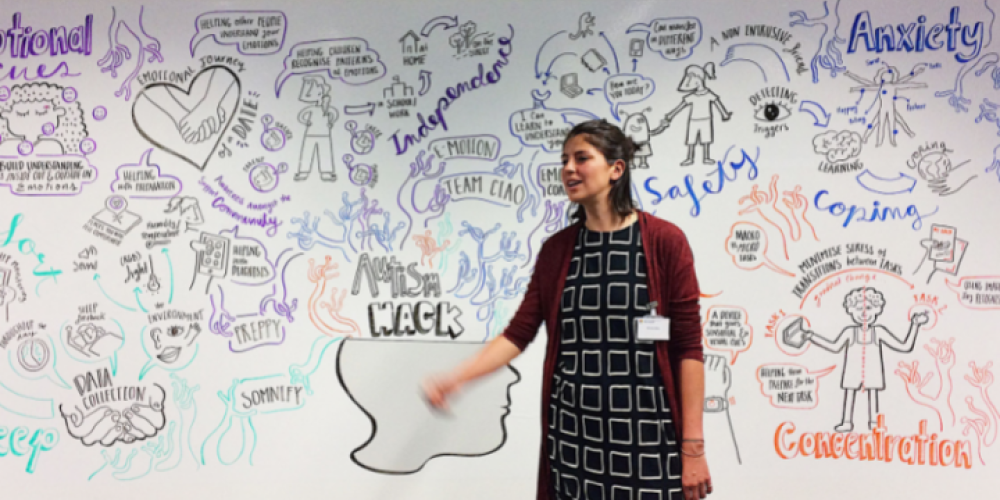
Whether it is visualising ideas for technology solutions to help children with autism, or working with the United Nations to illustrate messages for families in conflict zones, I am constantly looking for ways in which visual imagery can break down cultural and language barriers. This is where my interest in linguistics comes in. Language is the first point of communication between people and I am hoping that by gaining a theoretical understanding of what happens in the brain when we use language with others, I will be able to deliver more powerful messages that will help people communicate with each other in better, more meaningful ways.
I’m even using my graphic designing skills when it comes to my literature lectures. I draw what I learn. Personally, this is the only way I can learn: it helps me remember and process information, especially if that information includes 1,000 years of literary history! I recently had the opportunity to work with my professor, Elisabeth Bekers, on the Fictions of Europe conference. I graphic recorded one of the main keynote speakers, Jopi Nyman, on the topic of emerging narratives of borders and borderscapes in contemporary writing. It was a great way to not only help those in the room get a different perspective on the information they were hearing but also to engage a broader audience who might not necessarily be part of academia.”
Images of Europe
On the eve of the postponed Brexit and the European elections, Janine Hauthal and Elisabeth Bekers from the Centre of Literary and Intermedial Crossings convened 23 experts from 11 countries to discuss how Europe is being imagined in literature, theatre and film across the globe. The kick-off keynote speech demonstrated, for example, how filmmakers and writers insert Europe into a multipolar world that is no longer Eurocentric. They create unexpected critical relations between Europe and its ‘others’. Other experts, including Jopi Nyman (University Eastern Finland, see graphic recording by Silvia Paola Alba Cortes), explored the image of mental and physical borders. In the concluding keynote speech, former Passa Porta/VUB writer-in-residence Paula Morris gave the conference participants a sneak preview of her novel in progress, Yellow Palace, set in Europe in the months leading up to the Brexit vote.
Fictions of Europe was a forum in which artists and scholars debated the past and present complexities of Europe and imagined futures for Europe in this increasingly entangled world.
@silvia.draws
www.silvia-alba.com